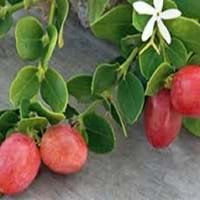Life Span
Perennial
Perennial
Origin
Japan
Central Asia, Southern Asia, Western Ghats, India
Types
Not Available
congesta, paucinervia
Number of Varieties
Not Available
Habitat
Lawn, shaded fields, Shaded sites
Fertile bottom land, moist forests, Temperate Regions, Tropical Forests
USDA Hardiness Zone
5-10
Not Available
Sunset Zone
3a, 3b, 4, 5, 6, 7, 8, 9, 14, 15, 16, 17, 18, 19, 20, 21, 22, 23, 24
Not Available
Habit
Clump-Forming
Upright/Erect
Flower Color
Tan
Pale White, White
Flower Color Modifier
Bicolor
Bicolor
Fruit Color
Brown
Purple, Black
Leaf Color in Spring
Dark Green, Gold
Green
Leaf Color in Summer
Dark Green, Gold
Green
Leaf Color in Fall
Dark Green, Gold
Green
Leaf Color in Winter
Dark Green, Gold
Light Green
Plant Season
Spring, Summer, Fall, Winter
Spring, Summer, Fall
Sunlight
Partial shade, Full Shade
Full Sun, Partial Sun, Partial shade
Growth Rate
Medium
Medium
Type of Soil
Clay, Loam, Sand
Loam
The pH of Soil
Acidic, Neutral
Acidic, Neutral, Alkaline
Soil Drainage
Well drained
Well drained
Bloom Time
Late Spring
Spring
Tolerances
Drought
Drought
Where to Plant?
Ground, Pot
Ground
How to Plant?
Rooted stem cutting, stem tip cuttings
Seedlings, Stem Cutting
Plant Maintenance
Medium
Medium
Watering Requirements
Needs more water during establishment, Water Deeply, Water in morning to avoid prompting diseases, Water in the early morning hours
Keep the ground moist but not water-logged
In Summer
Lots of watering
Lots of watering
In Spring
Moderate
Moderate
In Winter
Average Water
Average Water
Soil pH
Acidic, Neutral
Acidic, Neutral, Alkaline
Soil Type
Clay, Loam, Sand
Loam
Soil Drainage Capacity
Well drained
Well drained
Sun Exposure
Partial shade, Full Shade
Full Sun, Partial Sun, Partial shade
Pruning
Prune to control growth
Prune if you want to improve plant shape, Remove dead leaves
Fertilizers
All-Purpose Liquid Fertilizer, Apply N-P-K, Less fertilizing
Compost, fertilize in growing season
Pests and Diseases
Disease free, Insects, Red blotch
Aphids, Earwigs, Insects, Mildew, Red blotch, Rust, sawflies
Plant Tolerance
Drought, Rocky Soil, Shade areas, Variety of soil types, Wet Site
Dry soil, Heat And Humidity
Flowers
Insignificant
Insignificant
Flower Petal Number
Single
Single
Foliage Texture
Fine
Medium
Foliage Sheen
Glossy
Matte
Attracts
Aphids, Bugs, Mealybugs, Scale Insects
Birds, Butterflies, Fruit Bats
Allergy
Not Available
Eczema, Mouth itching, Throat itching
Aesthetic Uses
Beautification, Borders, Ground Cover, Landscape Designing
Not Available
Beauty Benefits
Not Available
good for lips, Remove blemishes
Environmental Uses
Air purification
Air purification, Food for animals, Food for birds, soil stabilisation
Medicinal Uses
Not Available
Anemia, Diuretic, Potassium, Rich in Iron, Vitamin C
Part of Plant Used
Leaves
Fruits, Leaves
Other Uses
Not Available
Added to salads, Cosmetics, Culinary use, Used as a nutritious food item, Used As Food, Used for its medicinal properties
Used As Indoor Plant
Yes
No
Used As Outdoor Plant
Yes
Yes
Garden Design
Container, Edging, Groundcover, Mixed Border, Rock Garden / Wall
Edible, Fruit / Fruit Tree, Hedges
Botanical Name
CAREX hachijoensis 'Evergold'
Carissa carandas
Common Name
Carex oshimensis
Carex morrowii
Black Currant
In Hindi
Japanese Sedge
करोंदा, कालि मैना
In German
japanische Segge
Carandas
In French
Japanese carex
karondas
In Spanish
juncia japonesa
karondas
In Greek
japanische Segge
karondas
In Portuguese
Sedge japonês
karondas
In Polish
japoński turzyca
karondas
In Latin
Sedge Italica
karondas
Phylum
Tracheophyta
Magnoliophyta
Class
Magnoliopsida
Magnoliopsida
Family
Cyperaceae
Apocynaceae
Clade
Angiosperms, Commelinids, Monocots
Angiosperms, Asterids, Eudicots
Tribe
Not Available
Not Available
Subfamily
Not Available
Not Available
Number of Species
Not Available
Season and Care of Japanese Sedge and Karonda
Season and care of Japanese Sedge and Karonda is important to know. While considering everything about Japanese Sedge and Karonda Care, growing season is an essential factor. Japanese Sedge season is Spring, Summer, Fall and Winter and Karonda season is Spring, Summer, Fall and Winter. The type of soil for Japanese Sedge is Clay, Loam, Sand and for Karonda is Loam while the PH of soil for Japanese Sedge is Acidic, Neutral and for Karonda is Acidic, Neutral, Alkaline.
Japanese Sedge and Karonda Physical Information
Japanese Sedge and Karonda physical information is very important for comparison. Japanese Sedge height is 20.30 cm and width 30.50 cm whereas Karonda height is 120.00 cm and width 120.00 cm. The color specification of Japanese Sedge and Karonda are as follows:
Japanese Sedge flower color: Tan
Japanese Sedge leaf color: Dark Green and Gold
Karonda flower color: Pale White and White
- Karonda leaf color: Green
Care of Japanese Sedge and Karonda
Care of Japanese Sedge and Karonda include pruning, fertilizers, watering etc. Japanese Sedge pruning is done Prune to control growth and Karonda pruning is done Prune if you want to improve plant shape and Remove dead leaves. In summer Japanese Sedge needs Lots of watering and in winter, it needs Average Water. Whereas, in summer Karonda needs Lots of watering and in winter, it needs Average Water.





